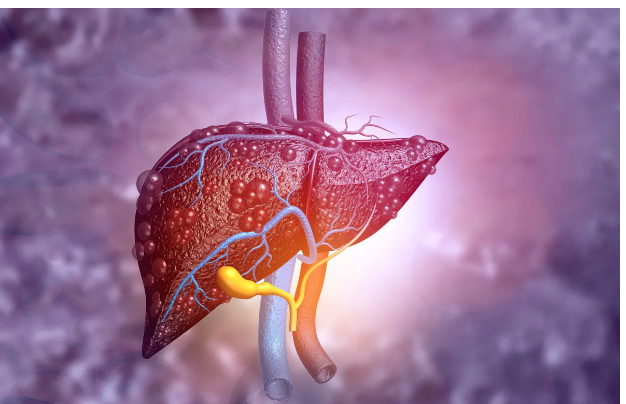News
Article
Systemic Treatment Plus Embolization Reduces Risk of Death in Patients With Hepatocellular Carcinoma
Author(s):
Compared to embolization alone, the systemic treatment combination nearly doubled progression-free survival among patients with unresectable liver cancer.
Durvalumab (Imfinzi; AstraZeneca) plus transarterial chemoembolization (TACE) and bevacizumab significantly improved survival outcomes among embolization-eligible patients with earlier-stage, unresectable hepatocellular carcinoma (HCC)—the most common type of liver cancer—in the EMERALD-1 study, according to a recent press release.
Treatment with durvalumab, TACE, and bevacizumab reduced the risk of death or disease progression by 23% compared to standard-of-care TACE (hazard ratio [HR] of 0.77; 95% confidence interval [CI] 0.61-0.98; p=0.032) in the phase 3, randomized, double-blind, placebo-controlled, multicenter, and global trial.
“Combining a systemic treatment with TACE meaningfully improves this clinically relevant outcome in earlier-stage disease,” said lead investigator Bruno Sangro, MD, PhD, director of the liver unit and professor of medicine at Clínica Universidad de Navarra, Pamplona, Spain, in the press release.
Image credit: Rasi - stock.adobe.com

The treatment combination boosted the primary endpoint of progression-free survival (PFS) compared to the control, nearly doubling the median PFS of what was achieved with TACE alone (15 months vs 8.2 months, respectively). Median time to progression (TTP) was more than double with durvalumab plus TACE and bevacizumab compared to TACE alone (22 months vs 10 months, respectively; [HR 0.63; 95% CI 0.48-0.82]).
Embolization is a routine procedure to treat earlier liver cancer, explains Sangro. Chemoembolization can block arterial blood supply to a tumor and allow for chemotherapy or radiation therapy to be delivered to the tumor, but disease progression or recurrence is common within a year of embolization.
EMERALD-1 was conducted to compare disease progression outcomes following treatment of durvalumab plus TACE (followed by durvalumab and bevacizumab [optional]) with treatment of TACE alone in a cohort of patients with unresectable HCC who are eligible to receive embolization (n=616). The primary outcome is PFS, and secondary outcomes are TTP, and overall survival (OS), which is still being evaluated.
Durvalumab is a PD-L1 binder. The human monoclonal antibody blocks the interaction between the PD-L1 protein and the PD-1 and CD80 proteins to facilitate an immune response. In previous studies that evaluated durvalumab for unresectable HCC, the most common adverse events (AEs) associated with treatment were rash, diarrhea, fatigue, pruritus, musculoskeletal pain, and abdominal pain.
There were no new safety signals during this study, however 45.5% of patients experienced higher grade AEs compared to 23% among patients in the TACE group.
The FDA has already approved durvalumab, in combination with chemotherapy, for locally advanced or metastatic biliary tract cancer (BTC). It is also approved as a combination therapy with tremelimumab-actl (Imjudo; AstraZeneca) for unresectable HCC in the United States, Europe, and China.
This study is AstraZeneca’s second positive phase 3 trial evaluating durvalumab for HCC. Results were presented at the 2024 American Society of Clinical Oncology Gastrointestinal Cancers Symposium in San Francisco, California.
“We are discussing these positive EMERALD-1 data with global regulatory authorities while awaiting the final OS results from the trial,” said Susan Galbraith, executive vice president, oncology R&D, AstraZeneca, in the press release.
REFERENCE
IMFINZI® (durvalumab) plus transarterial chemoembolization (TACE) and bevacizumab reduced the risk of disease progression or death by 23% vs. TACE in liver cancer eligible for embolization. AstraZeneca. January 19, 2024. Accessed on January 23, 2024. https://www.astrazeneca-us.com/media/press-releases/2024/imfinzi-durvalumab-plus-transarterial-chemoembolization-tace-and-bevacizumab-reduced-the-risk-of-disease-progression-or-death-by-23-vs-tace-in-liver-cancer-eligible-for-embolization-01192024.html

Measles Cases Climb to 800 in United States as Outbreak Spreads Across Borders





